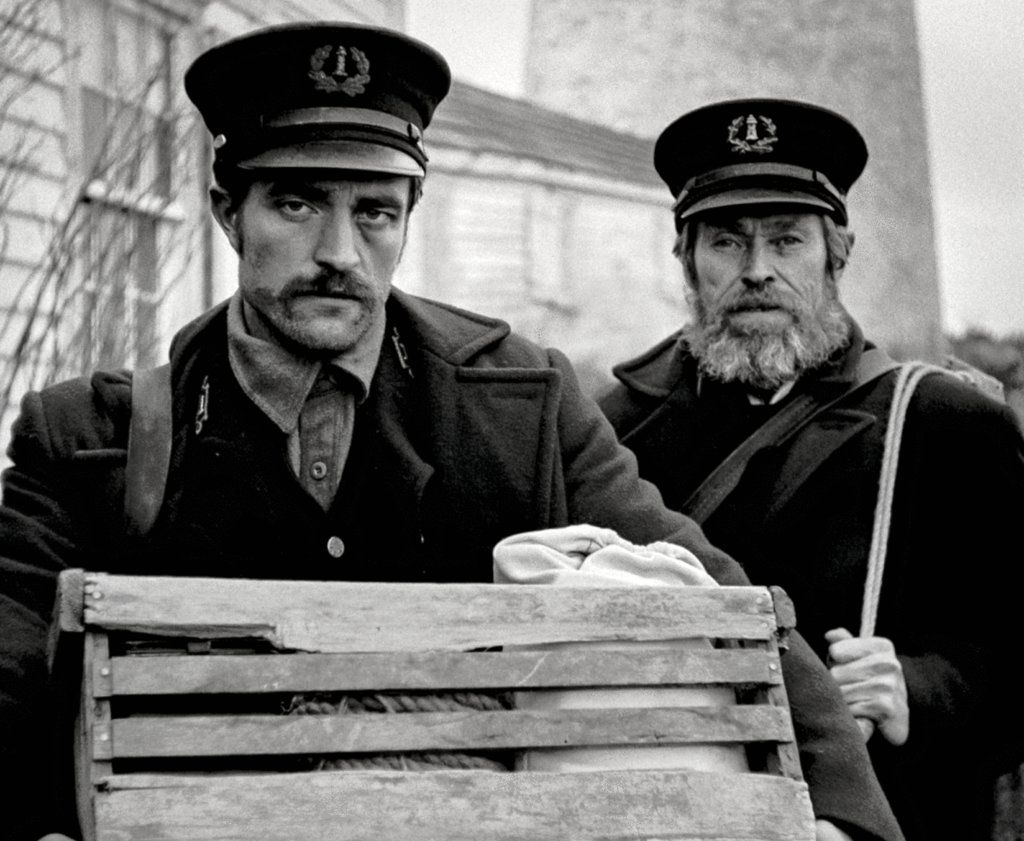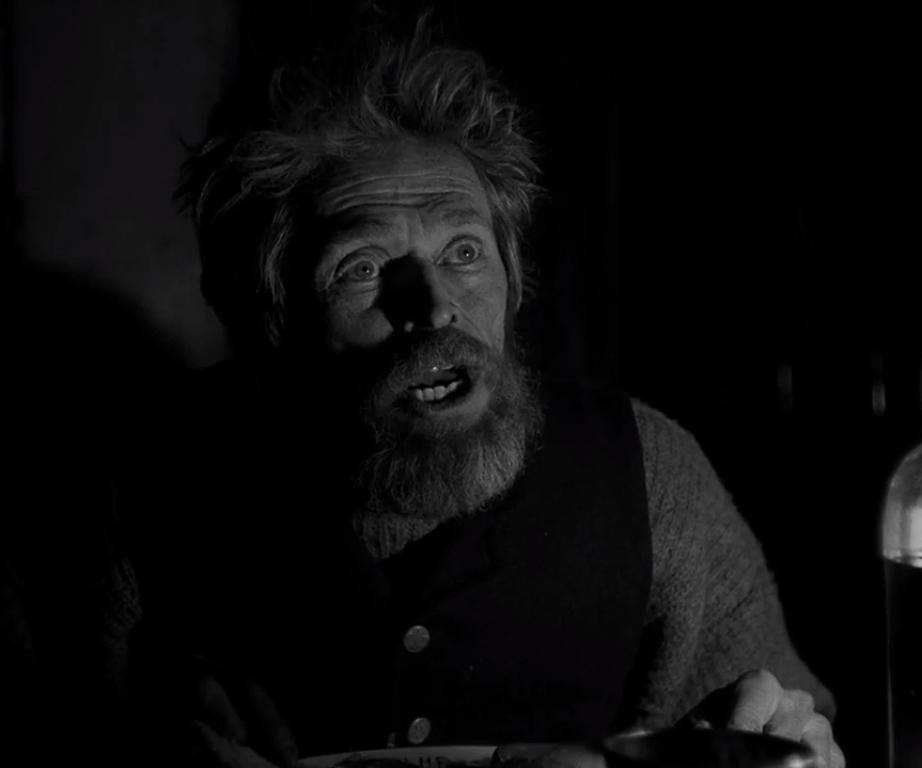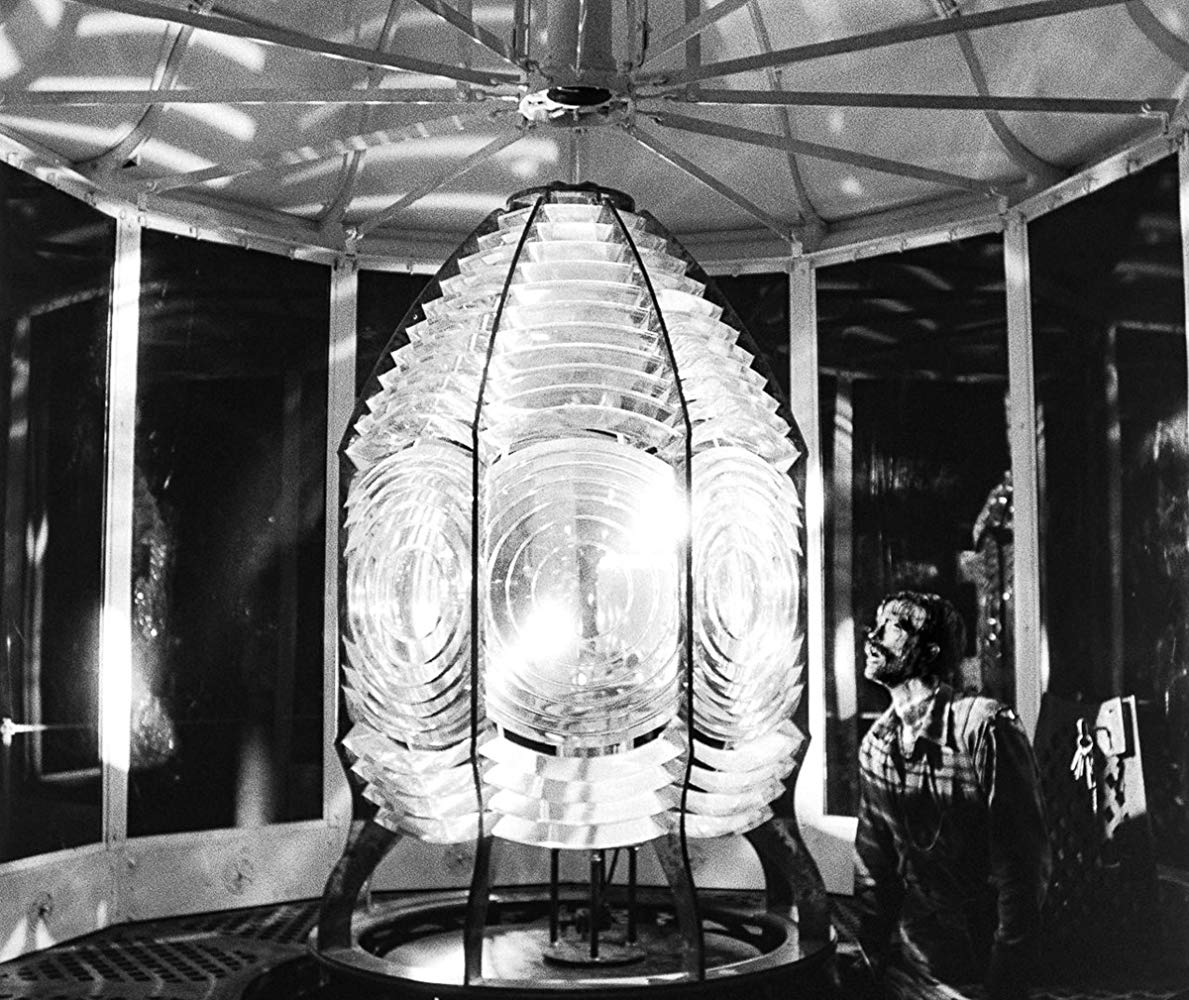By Guy Atoun, 2nd Year Law
Robert Pattinson and Willem Dafoe give career-best turns in a horrifying and mesmerising tale of loneliness, insanity... and seagulls.
The Lighthouse (2019) is perhaps the most powerful cinematic experience of the year. I had the privilege of watching this back in October at the London Film Festival twice, whereby both viewings left the audience practically speechless. The film stars Willem Dafoe and Robert Pattinson as two lighthouse keepers who slowly and surely lose their sanity.
Writer/director Robert Eggers is known for his previous feature-length film The Witch (2015), heavy with a theme of psychological horror - though it primarily adheres to classical horror style of cinematic storytelling. While The Witch is technically impressive and established Robert Eggers’ directorial abilities, The Lighthouse fully cements Eggers as one of the great filmmakers in modern cinema.

The film is shot in black-and-white with a 1.19 aspect ratio that constrains the screen to a portrait-tight Movietone ratio. Eggers specified that he intended this technical decision to produce this orthochromatic aesthetic that evokes 19th century photography, with the aspect ratio corresponding to the tall and narrow sets that seek to withhold information from the audience.
I had the privilege of watching this back in October at the London Film Festival twice, whereby both viewings left the audience practically speechless
Taking into consideration how the film is set on a remote lighthouse station in the 1890s where keepers were most likely accustomed to dull architecture and rough living conditions, this seems like a superb cinematic decision. It also exemplifies the building tension developed throughout the film which often holds vital importance in several scenes where the audience slowly loses their familiarity with the characters and their true identity.
It is necessary to mention that both Dafoe and Pattinson deliver career best performances. Quite honestly, Dafoe’s performance alone is likely to be one of the most powerful sensory experience you’ll have in the cinema this year. Him and Pattinson convey a perfect mix between visual story-telling and theatrical delivery that, although is certainty overwhelming at times, never feels out of place. It is no surprise that the story began as an attempt by Eggers’ brother Max to do a contemporary take on Edgar Allan Poe’s 1849 fragment The Light-House.

The feeling of uneasiness is exacerbated once the characters take part in the act of imbibing on a regular basis which is logical in consideration of the monotonous nature of their duties and their inability to leave the island. Many of the scenes where both characters are evidently intoxicated achieve a spectacular balance between drama and comedy that is facilitated by Louise Ford’s meticulous editing.
Furthermore, Mark Korven’s eery score accompanies the viewer in this anxiety-inducing journey of self-discovery of the past and its implications in the present. The unpredictable nature of this narrative and the awe-dropping conclusion will certainly leave viewers theorising for many years to come.
Don't F**ck With Cats: How the internet's unspoken rule will leave you speechless
The film was shot in Nova Scotia, Canada for a total of 34 days. You can clearly see the utter brutality of the weather conditions- that is predominantly authentic- through the leading men’s facial expressions alone. The sheer intensity of working under these conditions is illustrated through Jarin Blaschke’s precise cinematography which was recently recognised by a nomination at the upcoming Academy awards.
His intentions with the technicality of the camera work was to take people back further than the 1950s, where the idea of widescreen was introduced. Production even entailed the construction of a 70-foot working lighthouse specifically for the film, which according to Eggers could shine for 16 miles. Accordingly, the remote location, unfavourable weather and the complexity of the Shots Eggers and Blaschke had devised unquestionably defines The Lighthouse as a technically masterful feature.

With an intricate storyline that will not provide simplistic answers, the viewers are therefore left to interpret on their own the validity of the experiences portrayed on screen and whether they are a whole representation of reality. Ambiguity feels purposeful in the context of this story as, in its essence, the film focuses on the ways in which we confront our troubled past and how alcohol abuse may transform you into a violent and repressive being. This is intensified by the loneliness persistently felt by Pattinson’s character that further aggravates his unfortunate derail into madness.
It offers an incomparable cinematic experience that is endlessly rewatchable
There is no doubt that The Lighthouse is already one of the best films of year. It offers an incomparable cinematic experience that is endlessly rewatchable whether you seek to analyse the inherent complexities found in the film’s narrative- with many individuals noticing the integration of Greek mythology - or whether you simply want to strap back in for an atmospheric journey consisting of unnerving character building, outright insanity and a whole lot of spilling beans and malodourous farts.
The Lighthouse is set to receive a UK major release in cinemas on the 31st of January.
Featured - IMDb / A24
What are you looking forward to about the Lighthouse? Let us know!








